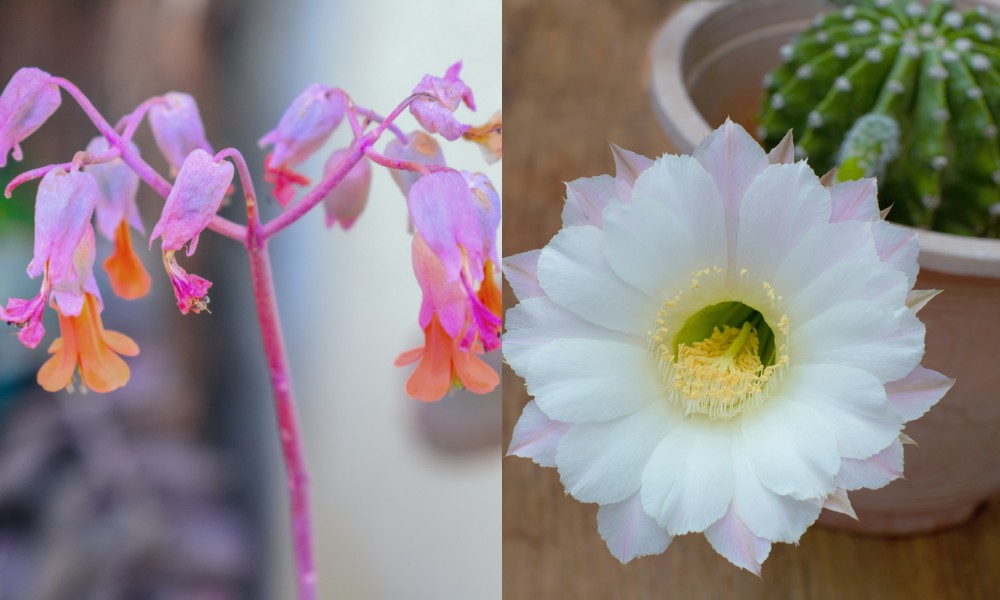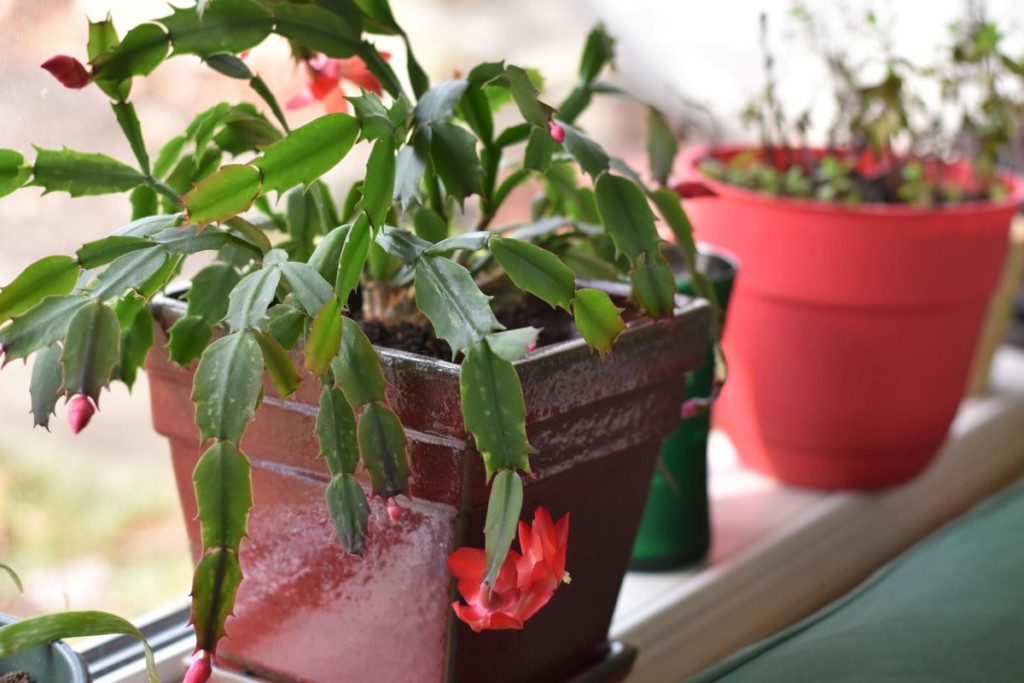
I’ll bet I know why you’re here. Some well-meaning friend or family member told you your plant wasn’t a Christmas cactus. Or maybe you’ve had a Christmas cactus for ages, but you’re struggling to get the silly thing to bloom. Or you’ve got a massive Christmas cactus on your hands, now you’re wondering whether or not it’s time to pot up.
Whatever reason you find yourself here, this is your one-stop post for all your Christmas cactus care questions.
Grab a hot beverage and get comfy. By the time you finish reading, I’ll bet you end up learning something new about everyone’s favorite holiday plant.
(Unless, of course, this is your favorite holiday plant.)
Just Misunderstood
Christmas cactuses are easily one of the most misunderstood houseplants. The poor things have a reputation for never blooming or blooming when they aren’t supposed to.
It seems as though everyone knows someone who has one that’s been in their family for decades. Cuttings from grandma’s treasured specimen are passed among family and friends, and for some reason, Grandma and your cousin who lives in another state are the only ones who can get theirs to bloom.
Related Reading: Why Is My Christmas Cactus Not Flowering? & 12 More Common Problems
To make matters worse, there’s a ton of confusion around the name “Christmas cactus.”
Many of us are finding out, much to our dismay, that the Christmas cactus we’ve been tending and growing for years isn’t even a Christmas cactus.
(The most popular listing for “Christmas cactus” on Amazon appears to be a Thanksgiving cactus which helps to add to the confusion!)
But like most things in life, once you learn the trick to mimicking their natural habits, these humble plants will explode each year with colorful blossoms. From there, it’s only a matter of time before you become the family member passing out cuttings from your treasured holiday cactus.
No need to be a grandmother, although, who knows, it might help.
Let’s Start with the Most Common Complaint
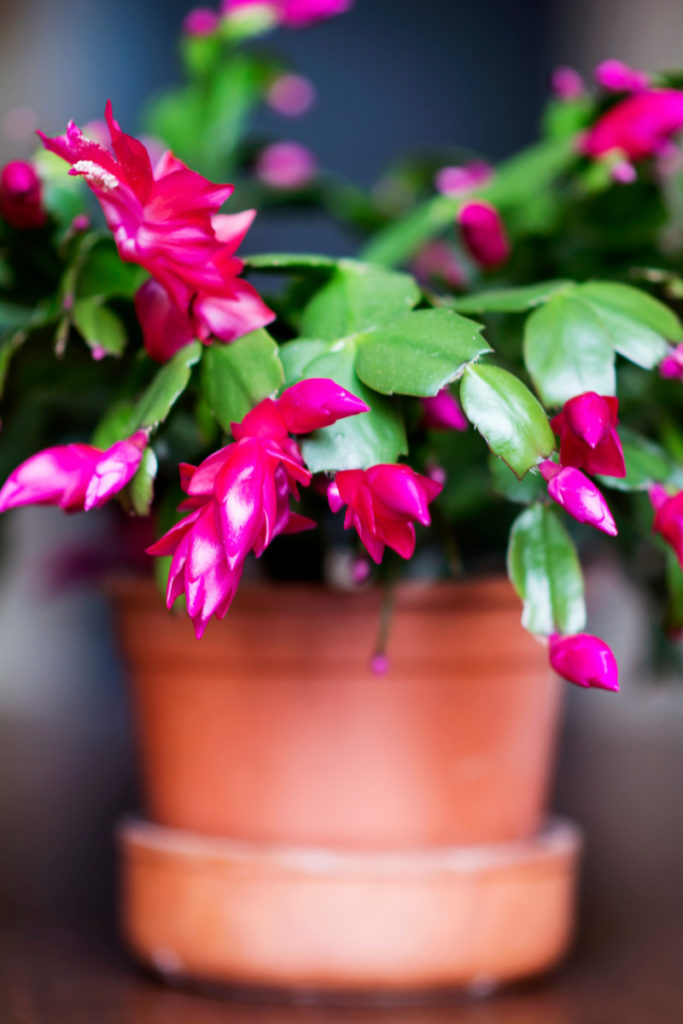
Much to the frustration of Christmas cactus owners everywhere, their plant never blooms at Christmas, or worse, it doesn’t bloom at all. I can assure you there’s nothing inherently wrong with your plant; it just needs different care from the rest of your plants. They march to the beat of their own drum, and that drum is daylight.
Christmas cactuses are short-day photoperiod blooming plants. Basically, photoperiod means the amount of time a plant is exposed to the sun to trigger blooming.
Christmas cactus set buds and blossom as the days grow shorter. Another popular Christmas short-day photoperiod bloomer is the poinsettia. Violets and chrysanthemums are short-day bloomers as well.
This explains why they bloom around Christmas here in the Northern Hemisphere. But it may surprise you to know that in their native region, Brazil, they are known as the Flor de Maio – the May Flower.
To understand how to take care of them and finally get them to bloom, it helps to take a look at how they grow in the wild.
They generally show up in the crooks of trees and on jagged rocks. They use their roots to cling to the rough surface. Christmas cacti are aroids, usually epiphytic (growing on a tree) or epilithic (growing on a rock). They live symbiotically with the plants they grow on. In the wild, these plants get much scragglier and woody than the pampered, cultivated plants we have in the living room.
All Christmas cacti fall into the Schlumbergera family.
What do you mean by “all” Christmas cacti?
Without blooms, and with a quick glance, all appear to be the same plant. However, on closer inspection, you can easily distinguish three different species. And here in the northern hemisphere, each species blooms around Christmas, Thanksgiving or Easter, thus giving them their common names.
(It’s becoming increasingly common for them to simply be called Holiday cacti to lessen the confusion.)
- Thanksgiving cactus – Schlumbergera truncata
- Christmas cactus – Schlumbergera buckleyi
- Easter cactus – Schlumbergera gaertneri
By far, the most common Schlumbergera is the Thanksgiving cactus.
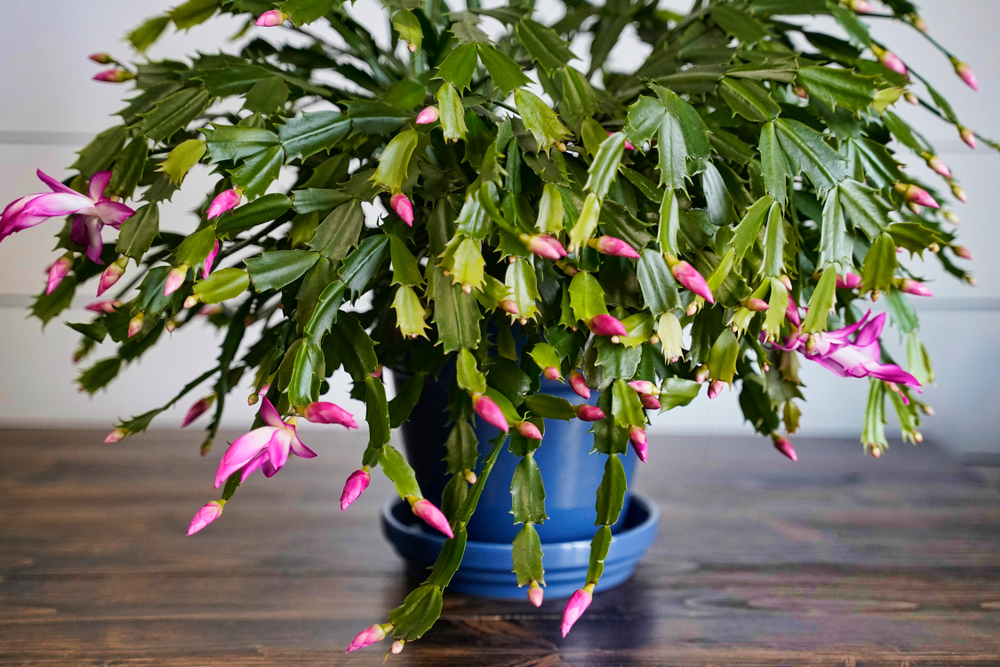
They’re so common here in the US because they’re the easiest variety for growers to have ready to ship, arriving in stores with buds ready to bloom at the start of the holidays. These cacti are what you see flooding every garden center or home improvement store around November.
How do you tell them apart? Keep reading; we’ll get to that. But for now, let’s figure out how to make this plant happy so it will bloom.
While there are three different holiday cactus, they all prefer the same care.
Despite being a cactus, their care preferences are more of what you would expect from a tropical plant like a pothos or a Monstera.
Light and temperature
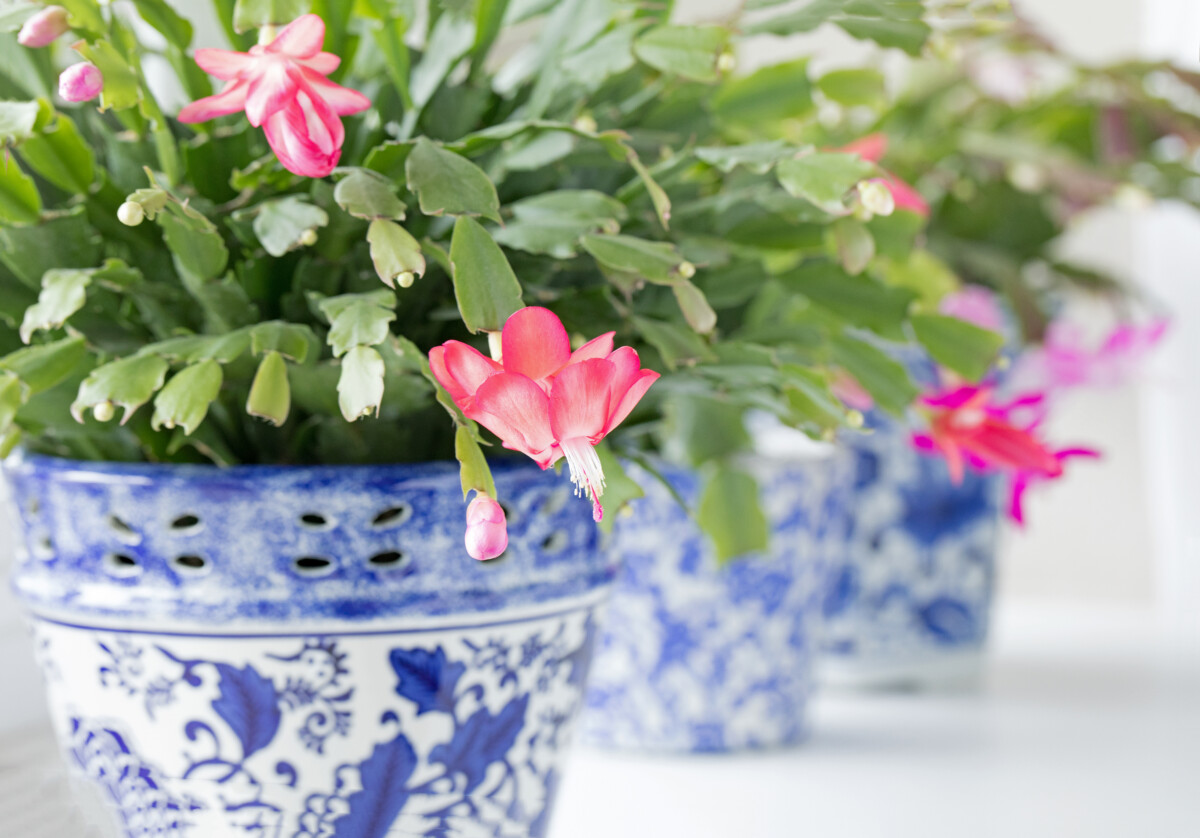
Holiday cactuses need lots of bright indirect light. An eastern-facing window is a perfect location for your plant. They love the same kind of warmth we’re comfortable in, preferring temps between 60-75 degrees.
You can even grow them outdoors if you live where the nighttime temps don’t fall below 50 F. However, they will not tolerate direct sun, and you need to plant them where they will be protected. They do best on a porch or under a tree, where they will be shaded from the sun during the hottest part of the day.
You can also put your plant outside during the summer and bring it in when the weather starts to cool down in the fall.
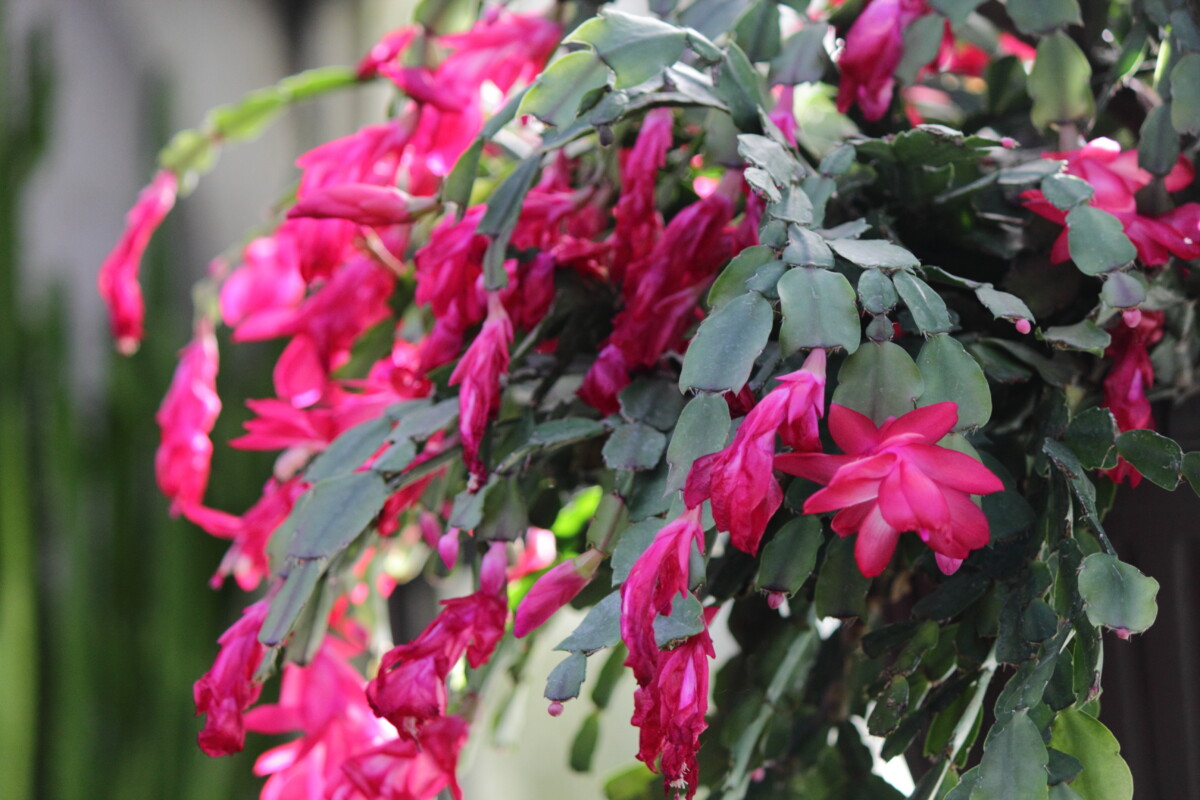
Just remember that they do not tolerate cold and are not frost-hardy. Be sure to bring your plant in before daytime temps drop much below 50 degrees.
Watering
As I said earlier, the holiday cactus is more like a tropical plant than a desert-dwelling cactus. When you water the plant, give it a good soaking and let it dry out between waterings.
These guys don’t like wet feet at all and easily develop root rot if you overwater. Be sure you use a pot with a drainage hole and tip standing water out of their saucer so the roots aren’t sitting in water.
Christmas, Thanksgiving, and Easter cacti prefer a humid environment. If you don’t live in this kind of climate, you can provide your cactus with the humidity it needs by placing the pot on a pebble tray, a flat dish or saucer filled with pebbles and water. The water will evaporate and keep your plant happy. Just be sure water is below the stones and the pot isn’t sitting in water.
If your home is dry, a pebble tray or a humidifier can provide humidity for your plant.
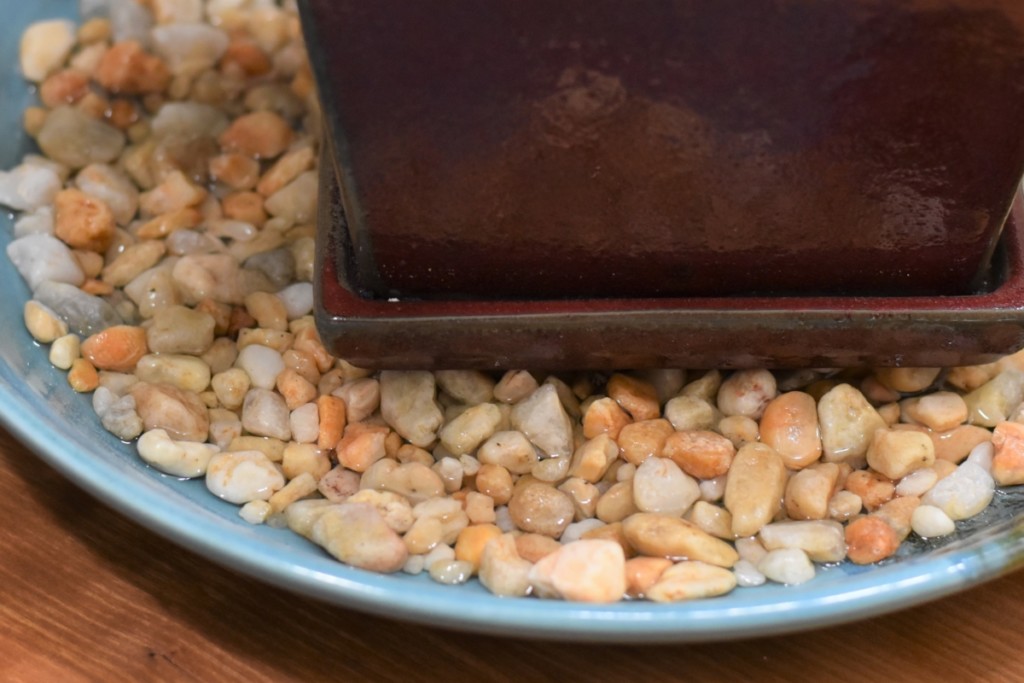
Soil
In their native habitat, these plants don’t grow in soil per se; rather, they grow in spots where dirt and debris would collect. Think about all the natural litter that accumulates in the crook of a tree or a shallow indent in a rock. They prefer similar soil when potted. Choose a good aroid potting mix such as this blend from Gardenera.
If you’d rather make your own, my African violet mix works well, too.
The holiday cacti prefer to be a little root-bound, so let them get good and snug in their pot. You only need to repot them every few years. When you do replant them, choose a new container that is only slightly bigger than the old one.
Fertilizer
Feed them with a balanced fertilizer during their active growth period – after the blooms have faded and new leaf segments begin to appear on the plant.
I’ve had great results with Dr. Earth Pure Gold Pump & Grow All Purpose Fertilizer. I use it at ¼ strength with every watering and add it directly to my water rather than following the directions on the bottle. Using a balanced NPK fertilizer will support new growth and give you plenty of new leaf segments.
About a month before the days start getting noticeably longer, I fertilize my Christmas cactus with Schultz African Violet Plus. Yup, I know, but don’t let the name fool you. The high phosphorus content supports bud development.
While the plant is actively blooming, feed it a balanced fertilizer once a month.
Blooming
These cactuses have beautiful blooms with delicate petals of pink, fuchsia, orange, white, or even purple. But how do you get these silly things to bloom anyway?
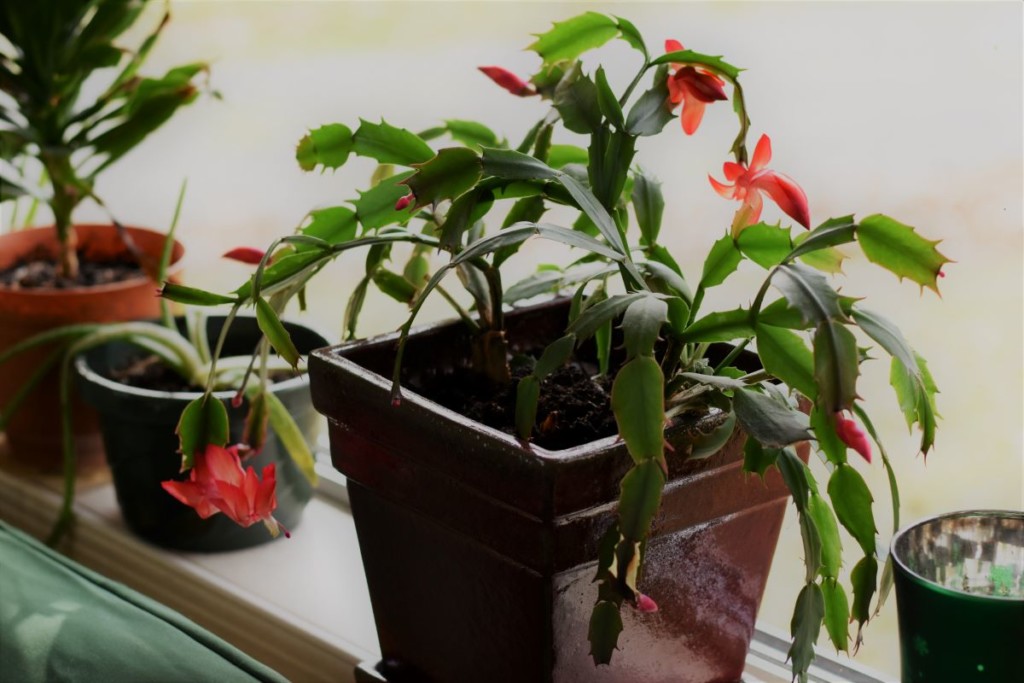
Remember, they are short-day bloomers.
As days begin to shorten, holiday cactus will go dormant for around four weeks before setting blooms. You can help this process along by giving it what it needs to bloom – longer, cooler nights.
Keep your plant in the dark for about twelve to fourteen hours a day. If you don’t have a place to put your plant where it will be in the dark, you can cover it gently with a black sheet.
The plant will also need cooler temperatures between 50-55 degrees to set buds. Move it to a cool room in your home.
Growing up, my mom would always put her Christmas cactus in the little pantry off the kitchen that led down to the basement. There was a door to the outside with a window, and the cool air from the basement came up the steps. It was the perfect place to create a false dormant period.
Once your cactus begins to set buds at the very tip of its segments, you can move the plant back to its usual location. Be careful, and don’t jostle the plant; they will drop buds if you disturb them too much.
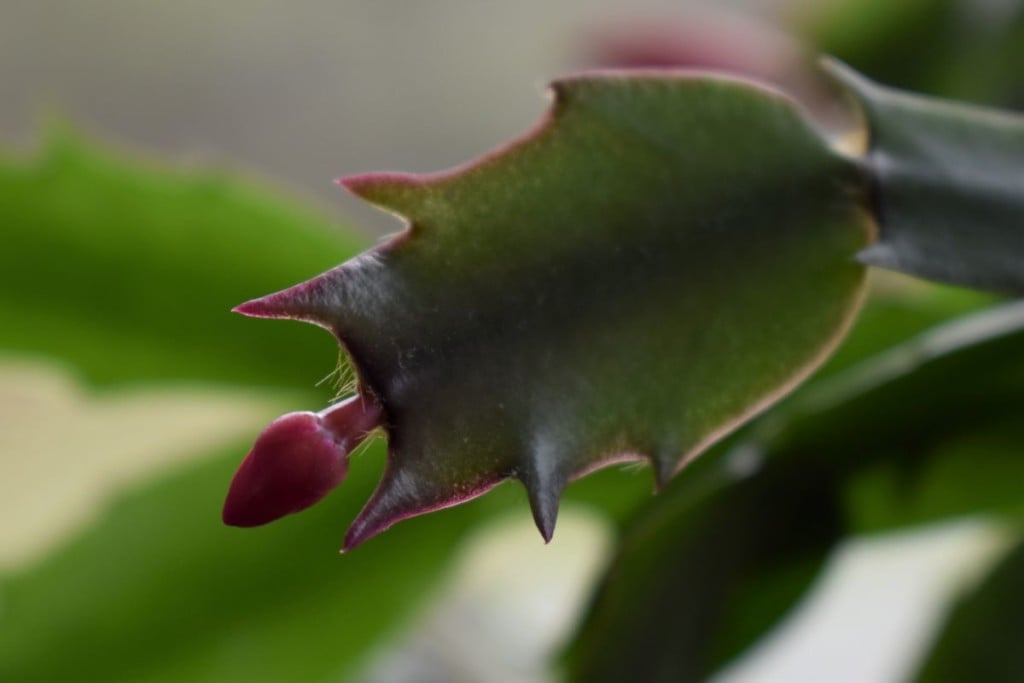
Holiday cactus can be temperamental and drop their buds if disturbed too much. While the plant is budding, be sure to water it regularly, keep it out of drafts and away from heat sources, and try not to move it around a lot.
As long as your plant goes through this dormant phase, your cactus should provide you with beautiful blooms every year.
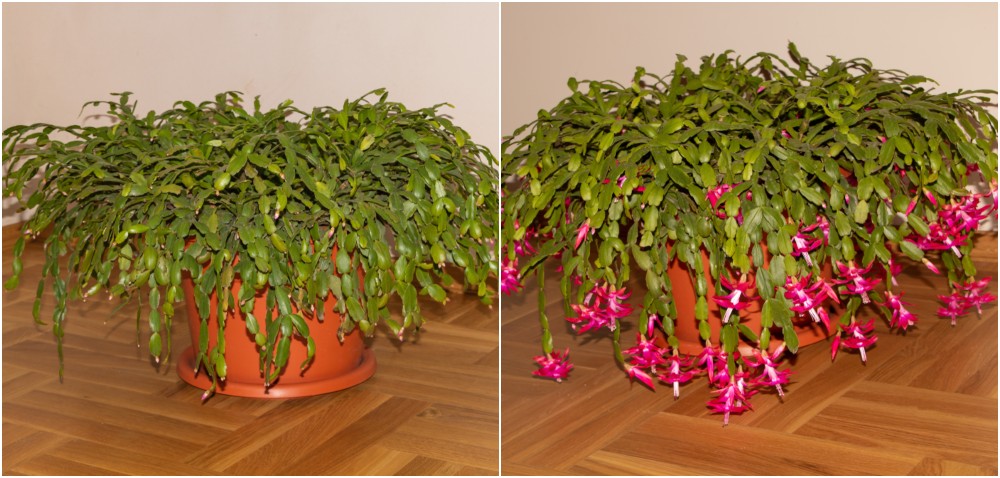
Propagating
Once your plant has finished blooming, let it rest for a month or two, then trim the plant back if it’s too leggy or you don’t like its shape. Trim it back to the desired length by clipping it at the base of a leaf segment with a pair of sterilized scissors.
Save these segments to propagate and share with friends and family. Let the leaf segments callous over for a few days after cutting. Then tuck each section 1” deep into a pot of fresh soil.
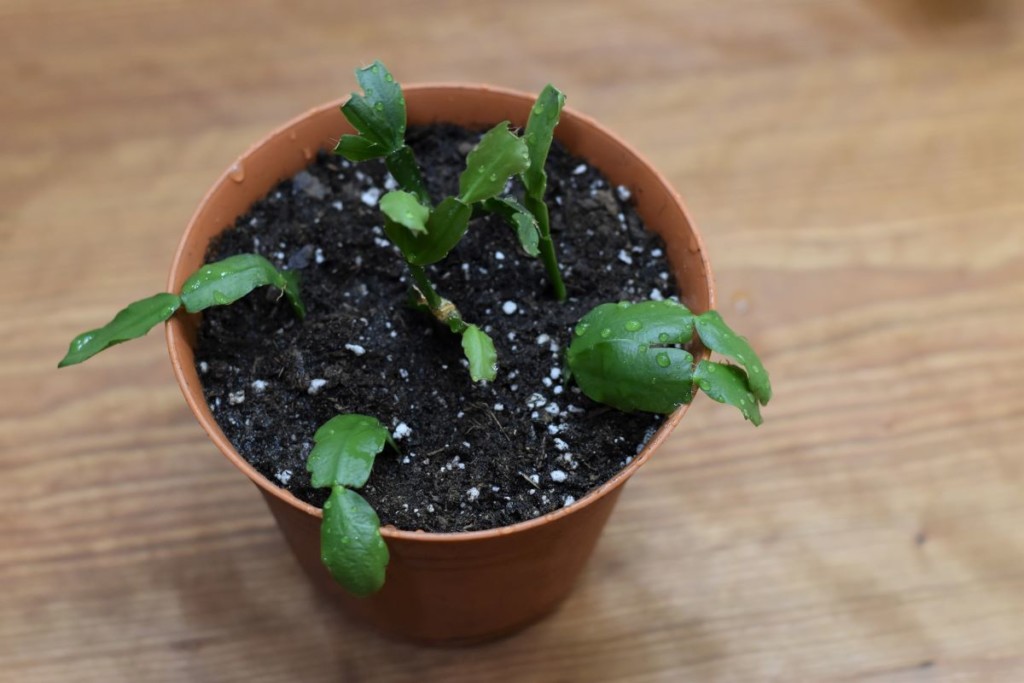
Water them sparingly while they are putting down roots. The plant should be well established within a couple of weeks, at which point you can water it normally.
Take a look at our complete step-by-guide to propagating Christmas cactus – or any other holiday cacti here: How to Propagate Christmas Cactus + 2 Secrets To Big, Blooming Plants
Don’t forget to share with family and friends, especially if you have a true Christmas cactus. They are tough to find!
Pets, pests, and problems
Luckily, holiday cactus are not poisonous to cats and dogs.

These cacti are generally pest-free.
Overwatering can lead to root rot. If your plant starts to look sickly and begins to drop entire segments, stop watering it. You may wish to dig out some of the dirt and expose the roots so they can dry out. Consider using terra cotta or other breathable clay pots rather than plastic containers for holiday cactus.
If your cactus leaves turn reddish-brown, they may be getting too much sun or not enough water. Move your plant to a location with less direct light and water it a little more.
How to tell holiday cactus apart
So, how do you know which holiday cactus you have? Take a look at their segments.
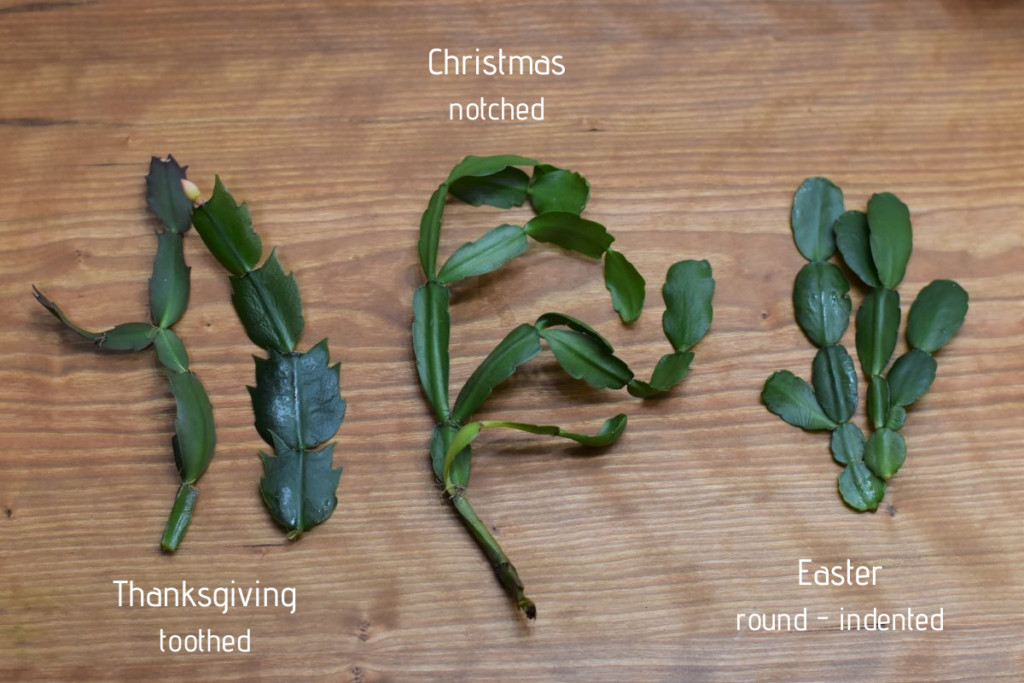
The Thanksgiving variety has pointed teeth at the top of each segment and the same on its sides. The segments are elongated and slightly boxy.
The Christmas cactus has a similar boxy shape but with notched sides rather than teeth.
Finally, the Easter cactus has very rounded leaf segments with shallow indents on its side.
When they bloom, both the Thanksgiving and Christmas cactus have tube-shaped blooms, whereas the Easter cactus has a more daisy-shaped flower.
Check out your plant; you may be surprised to find you don’t have a Christmas cactus at all.
With proper care, you will be enjoying the beautiful blooms of your holiday cactus for years to come, maybe even decades. They are incredibly long-lived plants, just made for sharing.
Pin This To Save For Later


Get the famous Rural Sprout newsletter delivered to your inbox.
Join the 50,000+ gardeners who get timely gardening tutorials, tips and tasks delivered direct to their inbox.



